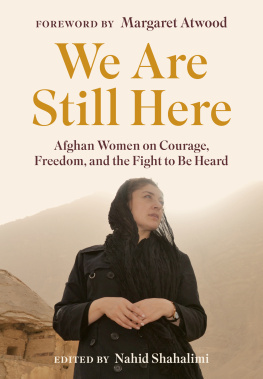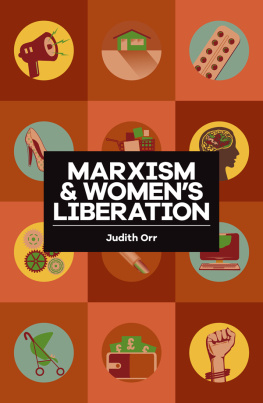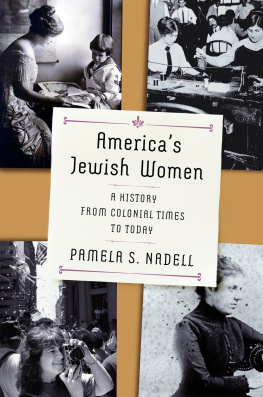Chapter 1
SEPARATE AND UNEQUAL: GENDER SEGREGATION ON PUBLIC BUSES
One Saturday night in 1995, I was traveling home to Jerusalem, Israel, after spending a weekend at Bar-Ilan University with my husband and young daughter. When the bus pulled up at the university stop, my husband went to put our bags under the bus while I boarded with my then-toddler asleep on my shoulder. As I got on, a man in the front row looked at me, got up, and offered me his seat. He looked about twenty years old, and his black suit, white button-down shirt, and black fedora was the attire characteristic of men in the ultra-Orthodox community in Bnei Brak, the town where the bus had originated. I smiled at him in a gesture of thanks and he smiled back.
But as I was about to sit down, the gentleman next to him, an older man with a white beard and similar black hat and jacket, tapped him on the arm and shook his head in disapproval, whispering something as he waved his finger back and forth. The young man looked at his elder and then back at me, wiped the smile off his face (in what I think might have been his version of an apology to me or perhaps just embarrassment), and sat back down. The older man crossed his hands on his lap and looked straight ahead, apparently satisfied.
As I continued down the aisle in search of a seat, I noticed that all the front rows were filled with men in black hats. They either stared blankly at me or straight ahead as I walked past, none offering a seat. Toward the back, I finally saw women. One woman, dressed in jeans and a short-sleeved shirt, saw me coming with my sleeping child and quickly got up for me. I have never been so grateful for a seat on a bus in my entire life.
This incident took place years before the national bus company in Israel officially established gender-segregated bus lines, what have been called mehadrin bus lines, literally glorified or extra kosher. When I took that bus ride, I had heard only faint rumors that such things existed. In fact, my only prior knowledge of gender segregation on buses was of the famed mechitza buses in New York, of all places, that went from the Jewish community of Monsey in Rockland County, New York, to Manhattan with a mechitza literally a partitiondown the middle. When I was growing up in Brooklyn, the mechitza bus was almost a joke. We mocked the vision of men and women bumping into each other in the aisles without actually seeing each other. It seemed so absurd it was laughable, a kind of exaggerated caricature of religious life taken to a ridiculous extreme.
But here I was, many years later, trying simply to get my family home to Jerusalem, and suddenly it wasnt so funny anymore. I felt as if I had unknowingly stepped into a cultural Twilight Zone where there were different rules and where my identity as woman now superseded all other circumstances and considerations. And I, as a mere woman, had no power to stop it.
A lot has changed in Israel since that incident, but not necessarily for the better. Over 150 segregated buses have been created by public companies in twenty-eight cities across Israel. The issue has been examined and discussed by the Knesset, the Transport Ministry, and the High Court in Israel. It has led to violence, lawsuits, reports, regulations, and attempts at legislation. And the situation, which threatens to impose cultural norms of religious radicalism on everyone in Israel, reflects an intense, statewide battle over some of the most basic rights of women.
The buses were the beginning. The first official segregation was established in 1997, when Israels primary national bus company, Egged, under growing pressure from Haredi community leaders, began operating a gender-segregated line on a trial basis between Bnei Brak and Jerusalem. These were two of the biggest strongholds of Haredi ultra-Orthodox culture in Israel (and, not insignificantly, two of the poorest cities in Israel). On this bus, in acquiescence to demands of Haredi leaders (all male leaders, of course), women were to board only from the back door and sit in the back, not in the front, which was reserved seating for men.
In 2001, Egged announced to the Haredi community that the trial was a success and that bus line 402 between Bnei Brak and Jerusalem would become permanently segregated. In addition, a new segregated route would be added, bus number 350 between Ashdod, another ultra-Orthodox community, and Bnei Brak. In addition, Egged spokesman Ron Ratner added that the gender-segregated mehadrin buses would not play inappropriate radio programs on the loudspeakers of these buses. The bus routes were also redrawn so as not to go through perceived non-Haredi areaswhich included the Jerusalem Central Bus Stationas demanded by Haredi leaders. Furthermore, even though these buses now would not be going through the Central Bus Station, Egged had apparently started pressuring shop owners in the station to change their displays to adapt to Haredi demands of so-called modesty. Already by the time of the announcement, an Internet caf had changed its screen savers and a lingerie shop changed its window dressings. According to an Egged source, we explained to the shop owners that if the Haredim boycott the bus station, it will mean less business for them.
When the first gender-segregated line was created, Arik Feldman, the chairman of Egged, said at the time, We hope that the new line will satisfy the chareidi [ sic ] sector, which is very important to us, and noted that Haredi Knesset members had been instrumental in making this happen. Itzik Kagan, spokesman for the other state-backed bus company, Dan, which was apparently part of the negotiations, added, We regard all the service we provide very seriously, and especially our service to the Haredi sector.
It might seem odd that the representatives of the bus companies were very enthusiastic about the establishment of these new segregated lines. After all, it goes against Israeli equal rights laws and discriminates against half their customers. But there were a number of incentives for them to appease the (male) Haredi market. The most obvious is that it represents an estimated 10 percent of Israels 8.2 million-strong population. In addition, this is a population characterized by large families and a high rate of poverty. Many Haredim cant afford cars and thus are some of the most consistent consumers of public transportation. For this same reason, tickets on the 402 mehadrin lines became 20 percent cheaper than the regular 400 bus between Jerusalem and Bnei Brak (15 NIS instead of 18 NIS), indicating another cave to Haredi pressure.
The Haredi community met this new development with equal enthusiasm. During its first two weeks of operation in 2001, the new gender-segregated 402 line reportedly had an imposing 14,000 passengers. The rest of Israel did not even know that this was happening, because it was never reported in the general press.
The Haredi community may have been proud of its victory in moving the entire Israeli political system to meet its demands, but the truth is this entire political deal to establish gender-segregated buses on public buses was struck behind closed doors. According to reports in the Haredi press, negotiations over this line had been taking place between Egged and the leaders of the Haredi community since 1997. A man named Rabbi Micha Rothschild representing a group called the Mehadrin Council (a self-described modesty monitoring service for public transportation) was quoted as saying that his group was working with Egged to expand this model to other lines within Jerusalem and to remove all the spiritual and educational pitfalls from the Central Bus Station in Jerusalem and from all the buses in the city.
Perhaps due to the backroom nature of these initial Haredi political steps to dominate the public bus system, secular politicians and leaders were rather slow to respond. Back in 2001, there were some reports that the antireligious Shinui Party was going to oppose all this, but Shinui eventually lost its seats and never got around to it. The Israel Religious Action Center (IRAC) announced that they were going to fight this with litigation, but it took almost six years for their first court petition on the subject. The rest of the country was mostly silent.
Next page






